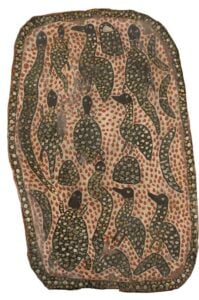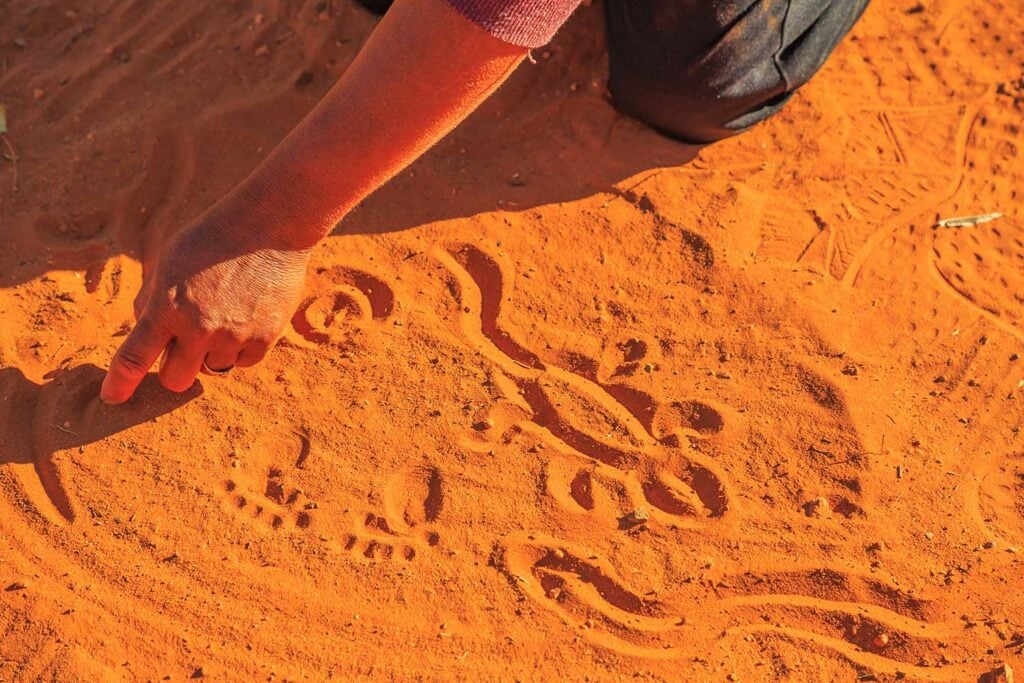Stretching back over 65,000 years, the history of Australian Aboriginal art is a chronicle of one of the world’s oldest continuous cultural traditions. Embodied within its rich visual narratives are tales of ancestral beings, cosmic events, and the deep spiritual connection the Indigenous communities share with the land. This article delves into the origins and evolution of this remarkable art form, revealing its enduring significance in the tapestry of human civilization.
Beginnings: Rock Art and Petroglyphs
The story of Australian Aboriginal art begins with ancient rock art and petroglyphs, some dating back tens of thousands of years. Found in regions like the Kimberley in Western Australia and the Kakadu National Park in the Northern Territory, these early art forms showcase an array of motifs:
- Animal Depictions: From kangaroos to barramundi fish, indigenous fauna are frequently represented, shedding light on the deep ecological understanding of these early artists.
- Human Figures: Known as anthropomorphs, these figures often showcase rituals, hunting scenes, and dances.
- Symbolic Patterns: Spirals, concentric circles, and other geometric patterns indicate sites of spiritual or ceremonial significance.
Bark Paintings: Nature’s Canvas
While rock art is an immovable testament to Aboriginal spirituality, bark paintings, primarily from the top end of Australia, provided a portable canvas. Crafted on tree bark and painted with natural ochres, these artworks encapsulated clan stories, Dreamtime narratives, and regional myths.
Body Art and Ornamental Designs
Aboriginal communities have a long tradition of adorning their bodies with intricate designs for ceremonial and ritualistic purposes. Using a blend of ochre, clay, and charcoal, they would paint symbolic motifs onto the skin. These designs, combined with crafted ornaments, formed an essential aspect of identity and spiritual expression.
Modern Transition: From Sand to Canvas
The late 20th century saw a significant evolution in Aboriginal art, especially in the Papunya region, where artists began transferring their traditional designs from sand and body art onto board and canvas. This transition facilitated the global spread and commercial viability of Aboriginal art, while still preserving its cultural essence.
Contemporary Aboriginal Art: A Global Phenomenon
Today, Australian Aboriginal art is celebrated worldwide, with artists like Emily Kame Kngwarreye, Rover Thomas, and Clifford Possum Tjapaltjarri gaining international acclaim. Contemporary Aboriginal artists have beautifully amalgamated traditional motifs with modern techniques and themes, producing artworks that resonate across cultural boundaries.
Protecting Authenticity and Heritage
The global surge in demand for Aboriginal art has brought along challenges, including concerns over authenticity and potential cultural appropriation. It’s imperative to ensure that as the art form garners international attention, the rights, traditions, and voices of the Indigenous artists are upheld and protected.
Conclusion
The history and origins of Australian Aboriginal art are a testament to the resilience, creativity, and spiritual depth of the Indigenous peoples of Australia. Their art, a vibrant blend of ancient motifs and contemporary themes, serves as a bridge connecting us to the timeless narratives of a land and its first inhabitants. As we stand before an Aboriginal artwork, we are not just witnessing an artistic expression but engaging with an ancient dialogue that reverberates through the ages.







